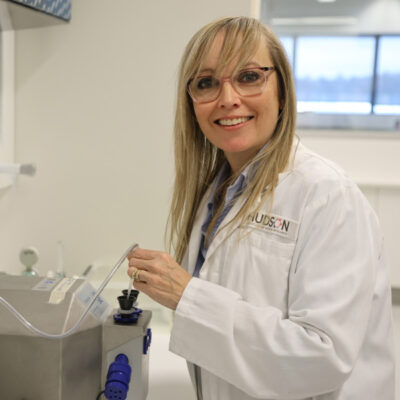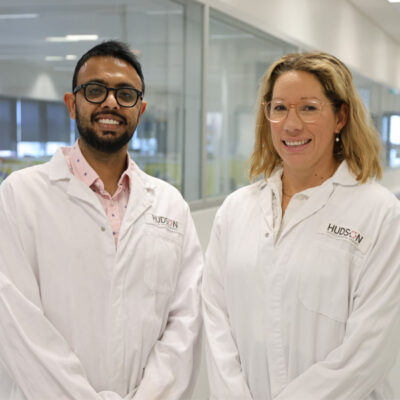An image of health: detecting brain damage in high risk babies
By Hudson Institute communications
The impact of a serious pregnancy condition that affects millions of unborn babies globally could be minimised by improved imaging techniques.

Hudson Institute of Medical Research and Monash University scientists used advanced imaging techniques to analyse magnetic resonance imaging (MRI) scans to detect subtle brain injury associated with fetal growth restriction (FGR), a condition that leads to babies not growing optimally in the womb.
Some of this brain damage would likely not have been found using conventional brain image analysis methods.
Published in NeuroImage: Clinical, the study is the first to use this technique in FGR cases. It has also been tried on MRI brain scans of adults with Alzheimer’s disease, dementia and other brain injuries.
Researchers hope the promising results will lead to improved early detection of brain injury and intervention in babies at risk of FGR.
Fetal growth restriction
FGR is most often caused by the placenta failing to deliver the required oxygen and nutrients to a baby in the womb, resulting in poor growth.
The condition affects up to 9 per cent of babies in Australia and up to 15-20 per cent in low and middle-income countries.
FGR can put babies at risk of loss in brain development, and long-term problems like cerebral palsy, autism, learning and other behavioural problems.
Improving early detection
After birth, ultrasounds and MRI scans are used to ascertain the risk of brain injury in babies that are diagnosed with FGR.

The Hudson Institute team, led by Dr Atul Malhotra and Associate Professor Suzie Miller, collaborated with physicists at Monash Biomedical Imaging and other partner institutions to analyse MRI brain scans in a pre-clinical model of FGR.
MRI machines use very strong magnetic fields to produce detailed three-dimensional anatomical images of living tissues. The resulting images can be analysed to detect abnormality and disease.
Dr Malhotra, a consultant neonatologist at Monash Children’s Hospital and a Research Fellow at Hudson Institute’s Ritchie Centre, described the process as a “pretty complex analysis”.
“Currently MRI scans are looked at in a particular way and processed in a particular way,” he said. “We took the conventional images, broke them down and analysed them in a different way to produce new images. It’s a very sophisticated way of looking at these scans.”
Next steps
Dr Malhotra’s research is focused on improving the detection and treatment of brain injury associated with FGR as well as increasing awareness of the potentially devastating condition. Following the latest paper, he hopes to use the analysis techniques to assess the brain scans of human babies who are born growth restricted.
“It’s immediately transferrable,” he said of the research. “We’re confident that there is subtle injury that our current technologies are not able to detect,” he said. “If we develop these technologies we’ll be able to detect more injury earlier.”
It is hoped the new imaging process will lead to improved early detection and treatment of FGR, particularly in cases involving subtle brain damage.
“It’s quite a development,” he said. “If we could detect subtle brain injury in at-risk growth restricted babies early, we could inform their care providers and parents, follow up more closely, and intervene earlier,” Dr Malhotra said.
While there is currently no way to reverse the detrimental impacts of FGR, Hudson Institute researchers believe there may be a cure in the not-to-distant future.
Collaborators | School of Clinical Sciences, Monash University, Monash Children’s Hospital, Monash Health, Central Clinical School, Monash University, Monash Biomedical Imaging, Florey Institute, CSIRO, Turner Institute for Brain and Mental Health
Funders | LEW Carty Foundation, Cerebral Palsy Alliance, NHMRC
Contact us
Hudson Institute communications
t: + 61 3 8572 2697
e: communications@hudson.org.au
About Hudson Institute
Hudson Institute’ s research programs deliver in three areas of medical need – inflammation, cancer, women’s and newborn health. More
Hudson News
Get the inside view on discoveries and patient stories
“Thank you Hudson Institute researchers. Your work brings such hope to all women with ovarian cancer knowing that potentially women in the future won't have to go through what we have!”







